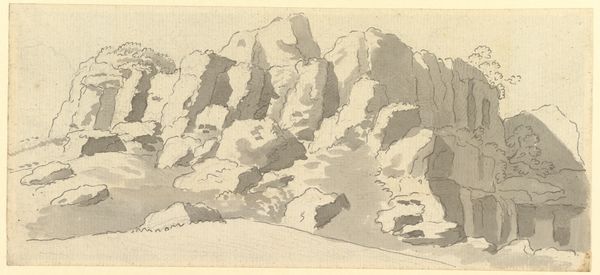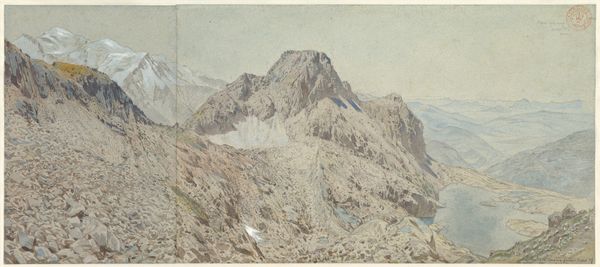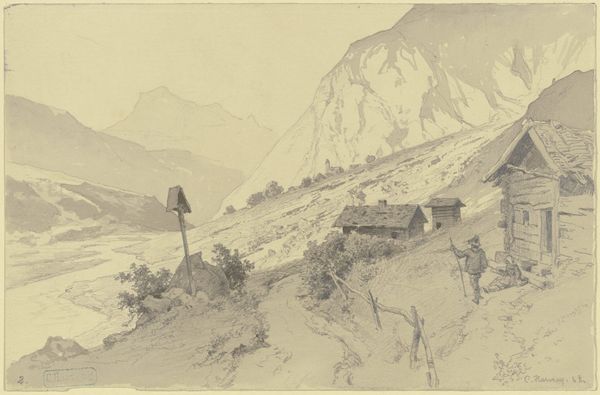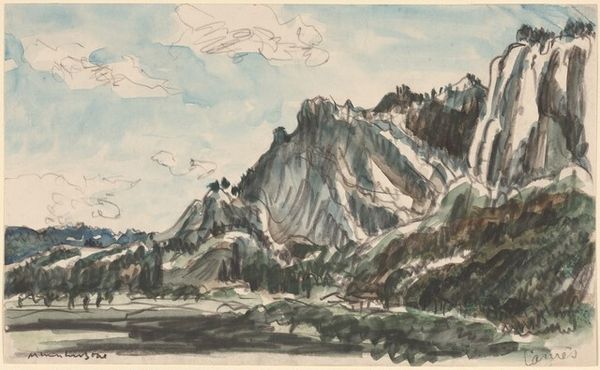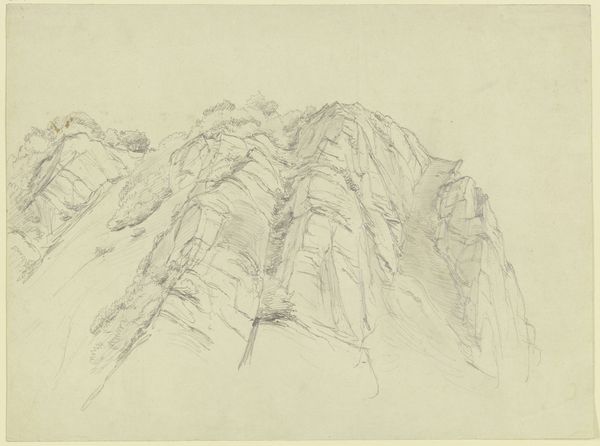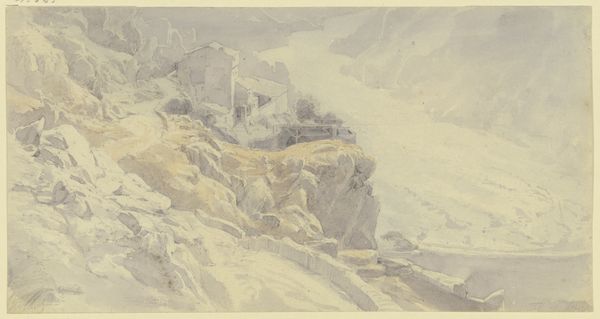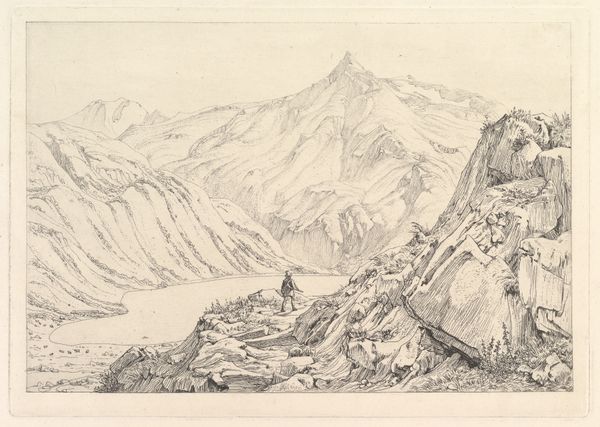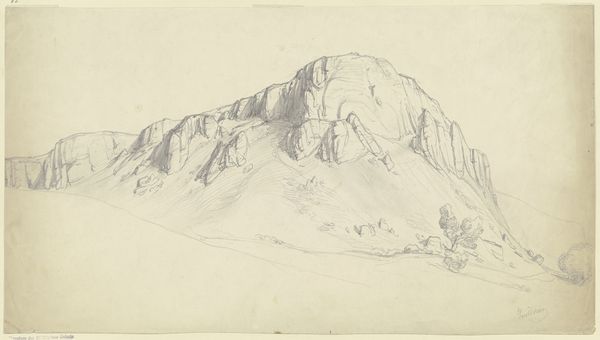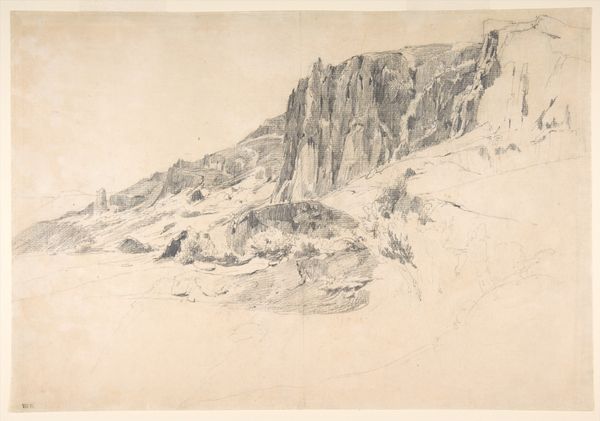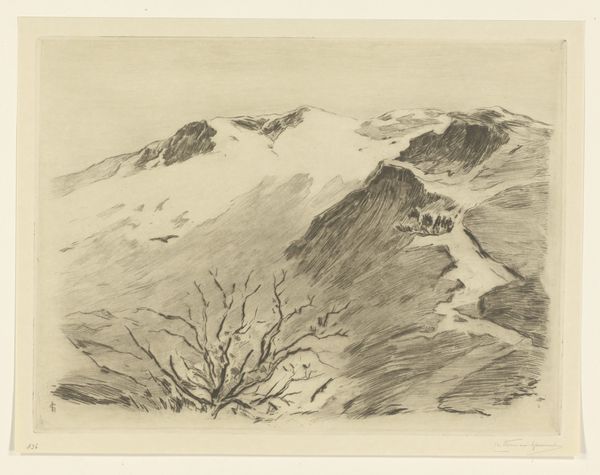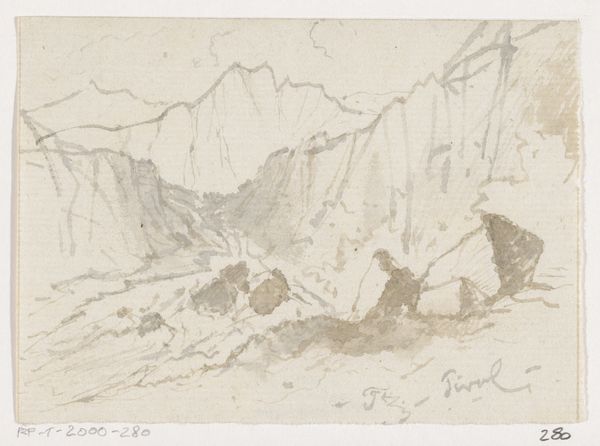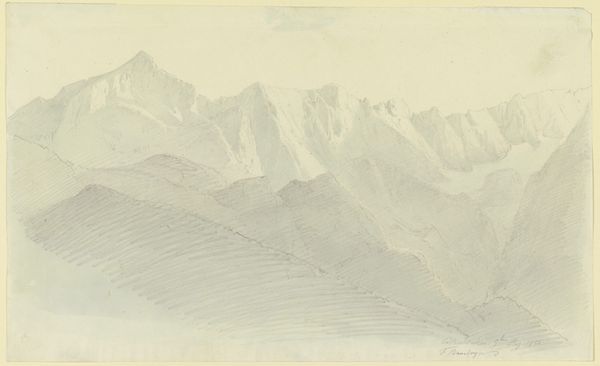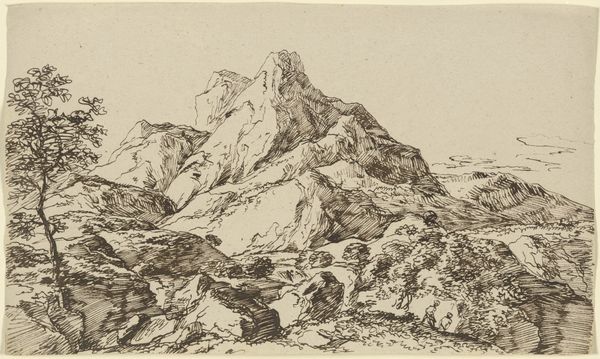
drawing, paper, watercolor
#
drawing
#
landscape
#
paper
#
watercolor
#
romanticism
#
watercolor
Copyright: Public Domain
Curator: This watercolor on paper by Johann Nepomuk Rauch, titled "Blick von Rosenlaui auf das Wetterhorn und den Eiger," offers a view of the Wetterhorn and Eiger mountains as seen from Rosenlaui. Rauch executed it around 1840. Editor: There's a delicate touch here, almost ghostly. It's both monumental in subject, with the grandeur of the Alps, and yet so fragile in its execution. You can really see the layers of wash the artist has used. Curator: Absolutely. It reflects a particular Romantic sensibility. The era emphasized nature’s sublime power and humanity's smallness. The mountains weren’t just geological formations, but rather representations of spiritual experience. Editor: Which then impacts the kind of labor that's deemed "artistic," doesn’t it? Working with watercolor demanded control, but also an openness to chance. The social value we place on that skill is intertwined with ideas about artistry itself, versus mere craft, or topographic rendering, and even labor in the mountain. Curator: Indeed. Topographical accuracy mattered to an extent, especially with growing scientific interest in geology, but also, such depictions fed a burgeoning tourist market. Prints after drawings like these could be sold to those eager to take home a memento. This particular watercolor is now part of the collection at the Städel Museum. Editor: And that transition from landscape to collectible reflects how even seemingly "untouched" vistas became part of a developing capitalist structure. This piece on paper represents something much more complex than just mountains; it speaks to evolving modes of seeing and owning nature. You almost sense how Rauch uses paper’s surface to evoke the atmospheric vastness—almost trying to compress this scale. Curator: The watercolor’s ethereal quality creates a dialogue between the monumental and the intimate, capturing not just the landscape's physical form but also its emotive power. It suggests a period invested in understanding landscape. Editor: This artwork reminds us that representations are never neutral. They're bound up in social, material, and historical conditions. It offers an early view on art market. Curator: A perfect way to consider this work. Editor: Exactly. It adds layers to my appreciation.
Comments
No comments
Be the first to comment and join the conversation on the ultimate creative platform.
